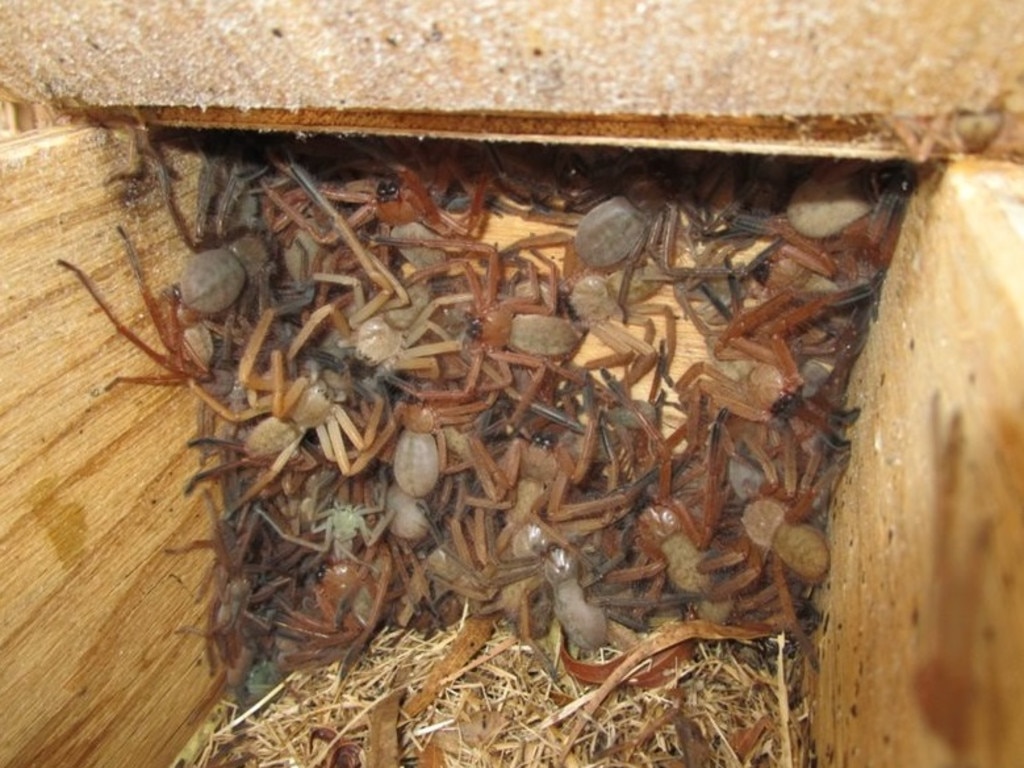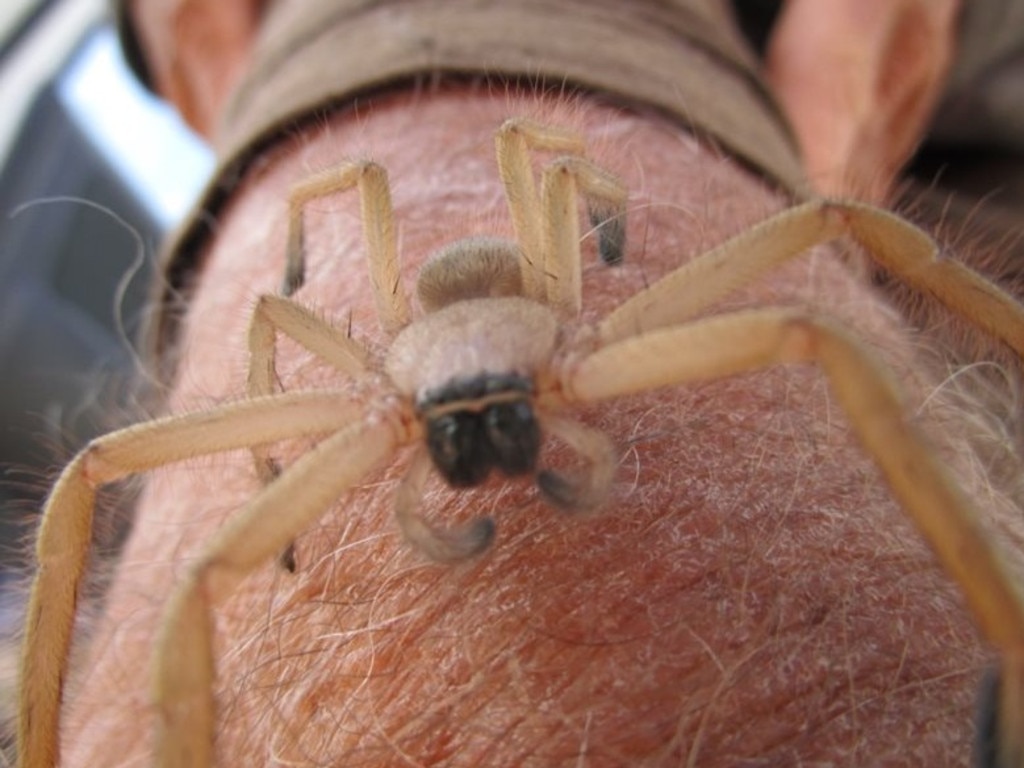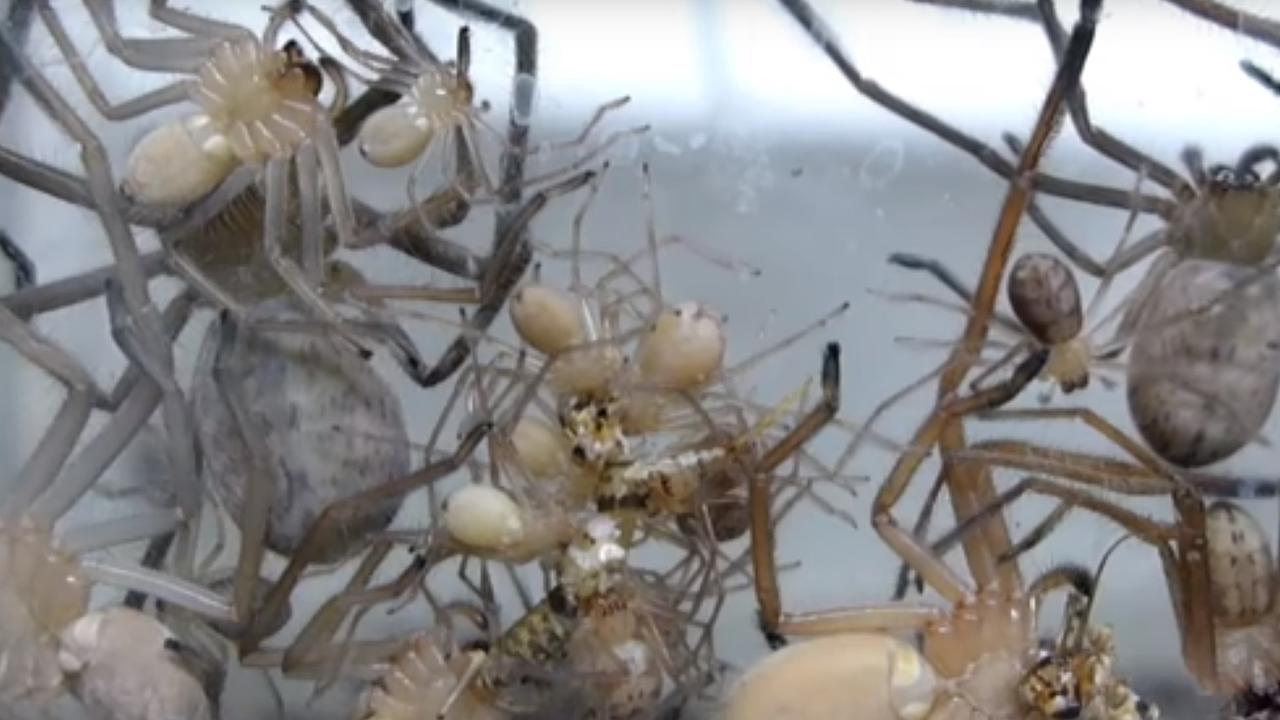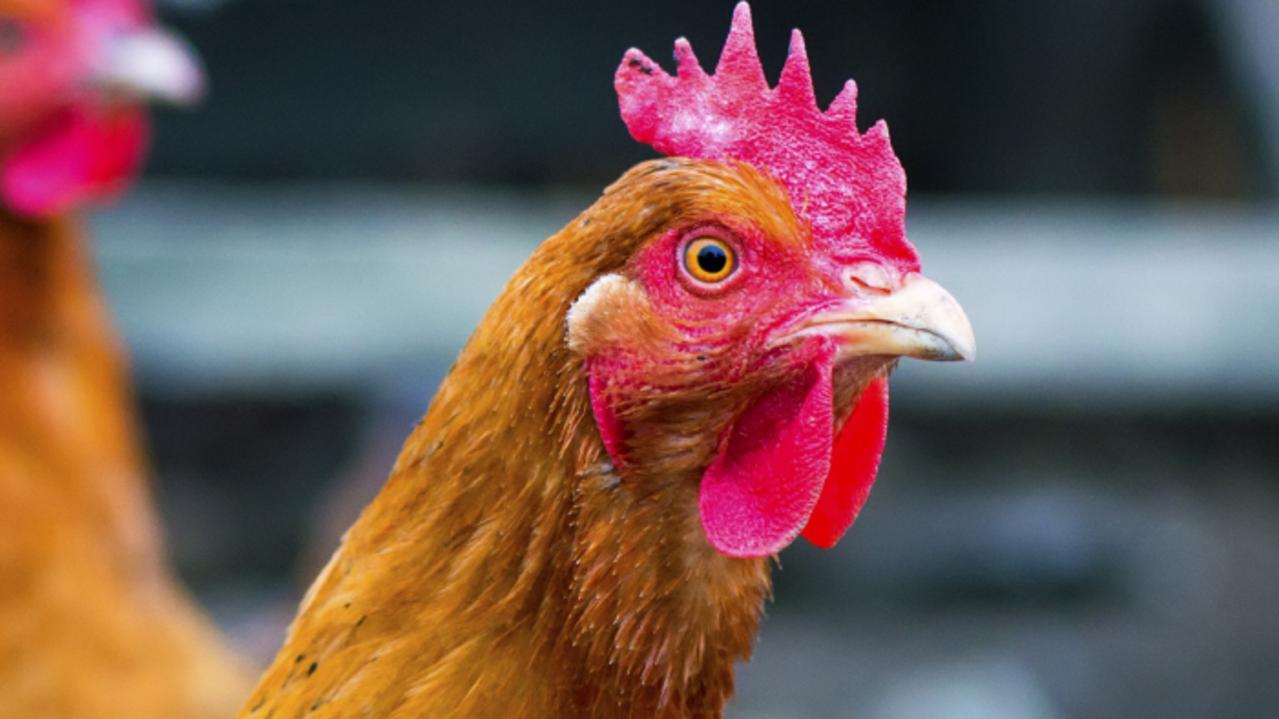Why massive nest of huntsman spiders uncovered in WA is such a rare find
We’re used to seeing terrifying photos of massive nests of spiders but there’s a reason why this one is so unusual.
Finding a lone huntsman spider in your house is commonplace in Australia.
But have you ever thought about why you always see them alone? Is there a massive motherload of a nest hidden somewhere in your house breeding them?
The answer is no - but there is an unusual species of the spider that does enjoy living together.
Ecologist Angela Sanders, of Bush Heritage Australia, made the startling discovery in Western Australia recently.
She was out looking for pygmy possums in nesting boxes they erected in restored habitat at the organisation’s Monjebup North reserve in southwest WA
“What we didn’t expect were the large colonies of social spiders that also moved in,” she said.
“It all started about the same time we were finding pygmy possums in the boxes, but on lifting the lids of some we found many huntsman spiders of all sizes whizzing around inside.
“We now know that they’re a species of huntsman that live together, normally under the bark of trees. In the restored area tree bark is in short supply at present and they’ve found the wooden boxes suitable.”

While most spiders look after their spiderlings until they’re old enough to go out by themselves, the practice of staying together as adults isn’t common.
Curtin University spider expert Leanda Mason said huntsman family connections were unusual in the spider world.
“This particular species is quite social,” Dr Mason told the ABC.
“The mother and her offspring will hang out. There’s generally one reproductive female, (and) as the other females approach adulthood, they leave or get eaten.”
Once in the wild, they still remember each other.
“They know how to sense each other and know they’re related,” Dr Mason told the ABC.
“They feel each other with their hairs — it’s similar to what bees do with recognising kin.”

Dr Sanders said in the social species a single adult female lays eggs and the successive generations of siblings help each other out and share prey items.
“This has several advantages for the spiders including faster growth,” she said.
“They’re also heavier and healthier.”
There are 94 different species of huntsman spider in Western Australia.
The female of the species can grow up to 15cm.
The largest huntsman in the world, found in South-East Asia, can grow to a leg-span of 30cm.

Cornell University entomologist Dr Linda Rayor said the social huntsman was primarily found underneath the bark of dead trees.
“Essentially what we’ve been interested in are the costs and benefits in group living in an unusual social spider,” she said.
She said about 30 per cent of their prey was shared.
“If you’re a little spider, if you’ve got older siblings, you get way better food,” she said.
“Animals that have been able to figure out how to live together, it’s pay-offs. There’s all sorts of advantages layered on - they grow faster, they’re healthier, they have better survival, they’re bigger. There’s lots of benefits to group living if you can overcome the costs.
“That’s the really interesting part.”




